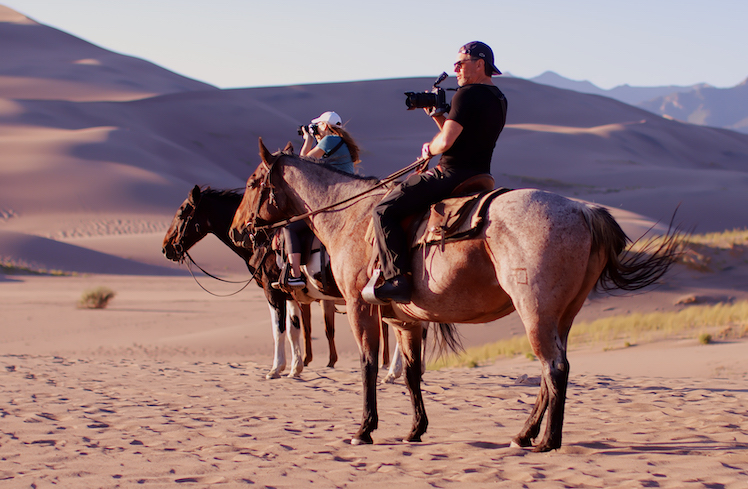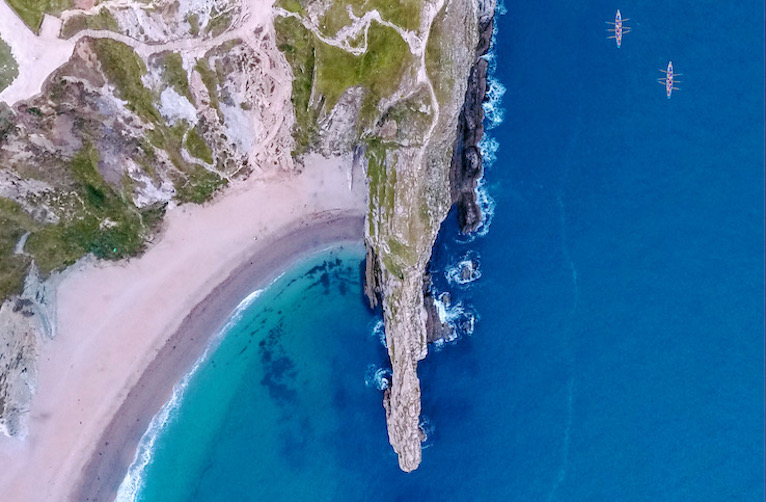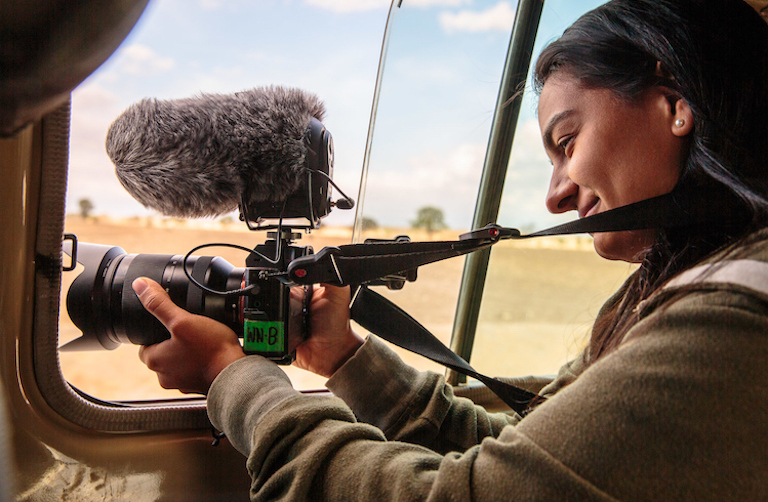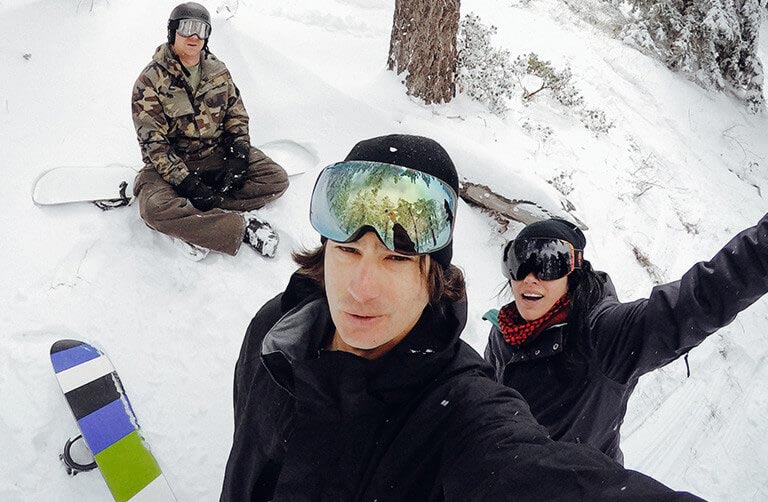For content creators, being able to shoot both photos and video can give you more creative freedom and opportunities.
 Photo © Dan and Zora Avila
Photo © Dan and Zora Avila
Whether you want to document your own adventures, share your stories with others, or make a living as a content creator, being able to shoot both great photos and as well as film offers more creative freedom.
It’s hardly a peer-reviewed study, but when we ask people “what would you really like to do with your life?”, the top response is “travel the world” or “experience different places and cultures”. To us, travel photography and videography are two of the most interesting and rewarding ways to capture the beauty and diversity of the world and to live a life of incredible experiences.
As Travel Shooters, we started as photographers but soon realized the value and opportunities that understanding video unlocked and, in our view, being hybrid shooters creates the greatest scope and opportunity to live out your travel life goals.
But how do you balance both mediums without compromising on quality or efficiency? How do you switch between taking stunning stills and captivating motion? How do you edit and manage your files without getting overwhelmed?
- Choosing the right gear and accessories
- Planning your shots and itinerary
- Shooting in different modes and settings
In this article, we will share some tips and tricks on how to be both a travel photographer and videographer, based on our own experience shooting incredible projects on every continent.
Key considerations:
- Choosing the right gear and accessories
- Planning your shots and itinerary
- Shooting in different modes and settings
- Editing and organizing your files
- Sharing and monetizing your work.
Choosing the right gear and accessories
One of the biggest challenges of being both a travel photographer and videographer is finding the right gear and accessories that can handle both tasks. You want to have equipment that is versatile, reliable, lightweight, and practical.
Here are some of the essential items that we recommend for any travel photographer/videographer:
- A camera that can shoot both photos and videos. There are many cameras on the market that can do both, but some are better than others. You want to look for a camera that balances a modern high-resolution sensor, a fast and accurate autofocus system, a good dynamic range, a flip-out screen, a microphone input, and a decent battery life.
- A tripod that can serve multiple purposes. A tripod is essential for stabilizing your shots, especially when shooting certain videos or long exposures. However, carrying a full-sized tripod can be cumbersome and impractical for travel. That’s why we suggest a tripod that is big enough for the camera system you’re using and with carbon fiber legs. Some models have an interchangeable head that provides a video option. These are not as smooth as a dedicated video head, but at a fraction of the weight, they are a great solution.
- A gimbal that can hold your camera. A gimbal is a device that uses motors and sensors to keep your camera or smartphone steady while you move. It can help you create smooth and cinematic videos, as well as timelapses and hyper lapses. However, not all gimbals are compatible with all cameras, so you need to check the specifications before buying one. Learn to master the “gimbal ninja walk” and you’ll get some incredibly cinematic shots.
- A drone that can take aerial photos and videos. A drone is a great way to capture unique perspectives and stunning landscapes from above. However, not all drones are suitable for travel, as some are too big, too heavy, or too noisy. You also need to check the local laws and regulations before flying a drone in any country.
- A backpack that can fit all your gear and accessories. A backpack is more than just a bag; it’s your mobile office and studio. You want to have a backpack that can protect your gear from damage, theft, or loss, as well as provide easy access and organization. You also want to have a backpack that is comfortable to wear, durable, and stylish. The right bag will make life so much easier, just make sure that it’s the right size for airline carry-on requirements.
Planning your shots and itinerary
Another challenge of being both a travel photographer and videographer is planning your shots and itinerary. You want to have a clear idea of what you want to capture, where you want to go, when you want to go there, and how you are going to balance and prioritize your photo and video captures.
Here are some of the steps that we follow when planning our shots and itinerary:
- Do your research. Before you go anywhere, do some research on your destination. Look for information on the culture, history, geography, climate, attractions and events, of the place you are visiting. You can use sources such as guidebooks, blogs, podcasts, videos and social media to get inspiration and tips. You can also use tools such as Google Maps, Google Earth, and Google Street View to scout locations and routes.
- Make a list of your must-see and must-do items. Based on your research, make a list of the things that you want to see and do in your destination. Prioritize the items that are most important or interesting to you, and group them by location, theme, or genre. Travel shooting often means making choices about which place to visit and which to miss. We like to have our priorities established before we travel.
- Create a rough itinerary. Based on your list, create a rough itinerary that outlines your daily activities and goals. Include the time, place, mode of transportation, and what you are targeting at each location. This is like your own personal run-sheet. Taking a relaxing holiday is great, but if the goal is to capture some extraordinary photos and video, planning and structure will improve your results.
- Be flexible and adaptable. Yes, have a plan, but also be prepared to override this on the basis of unique and unplanned opportunities. Sometimes the best shots are the unplanned captures. You may encounter unexpected weather that may affect your itinerary or discover new people, places and events that may be better shoot opportunities. Be ready to adjust your plan accordingly, and don’t be afraid to improvise or experiment.
Shooting in different modes and settings
The next challenge of being both a travel photographer and videographer is shooting in different modes and settings. You want to be able to switch between taking photos and videos quickly and easily, without missing any moments or compromising on quality.
Here are some of the tips and tricks that we use when shooting in different modes and settings:
- Use the same camera for both photos and videos, rather than carrying two separate cameras. This will save you time, space, weight, and hassle. You can use the same camera for both photos and videos by changing the mode dial or the menu settings on your camera. Better cameras will maintain your last-used individual setting in photos and video.
- Use the same lens for both photos and videos, rather than changing lenses frequently. This will save you time, space, weight, dust on your sensor, and hassle. You can use the same lens for both photos and videos by choosing a versatile lens that can cover a wide range of focal lengths. For example, you can use a zoom lens such as a 24-70mm f/2.8 or a 16-35mm f/4; or a prime lens such as a 35mm f/1.8 or a 50mm f/1.4.
Being a travel photographer and videographer creates challenges with the extra weight of equipment and potentially splitting priorities between motion and still captures, yet it creates increased opportunities to improve the exposure of your work, great value for clients and as such, improved commercial prospects. If you get the balance right, extraordinary experiences that lead to amazing content will increase the prospects of being paid to do the things you love.
Dan is one half of the creative team behind the TV series Travel Shooters, which is shot on location around the world. Dan and his partner Zora were the mentors for the World Nomads 2023 Photo and Film Scholarship to Norway.
Related articles
Simple and flexible travel insurance
You can buy at home or while traveling, and claim online from anywhere in the world. With 150+ adventure activities covered and 24/7 emergency assistance.
Get a quote


No Comments